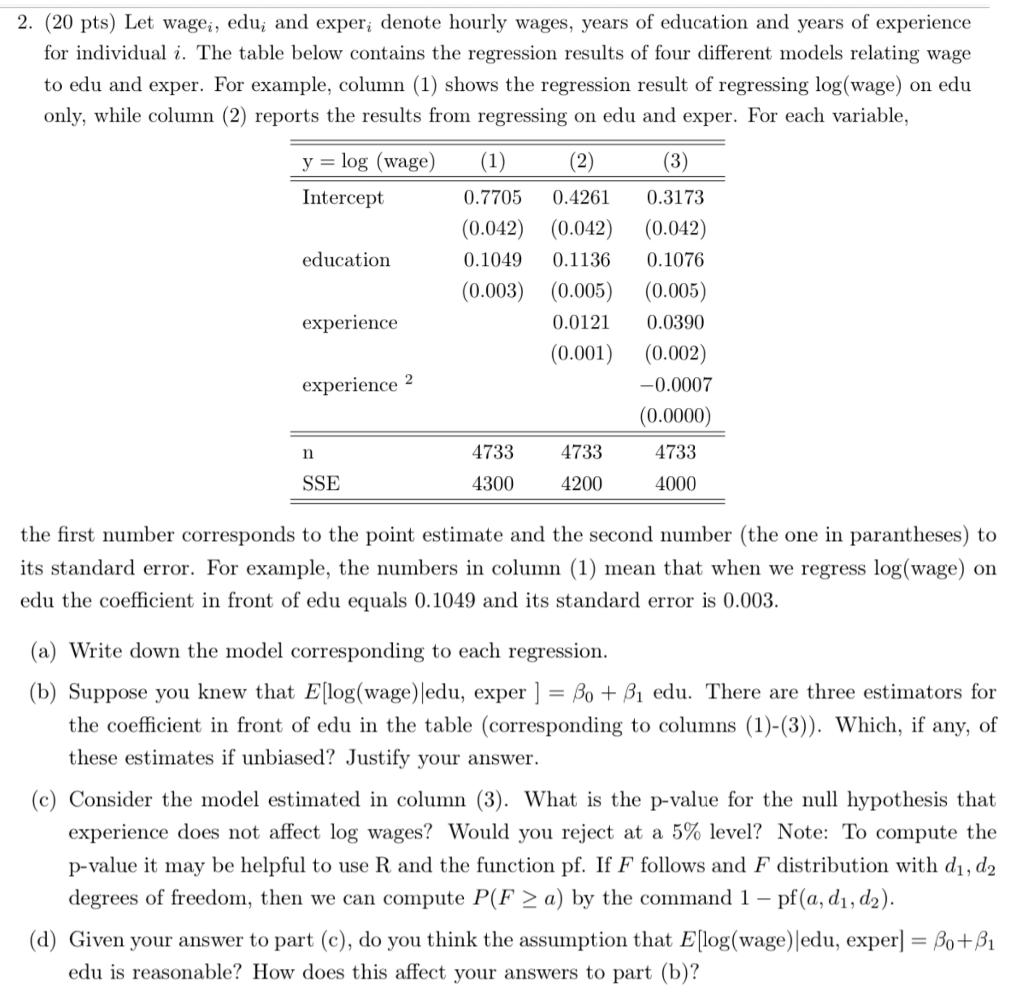
for individual i. The table below contains the regression results of four different models relating wage to edu and exper. For example, column (1) shows the regression result of regressing log(wage) on edu only, while column (2) reports the results from regressing on edu and exper. For each variable, the first number corresponds to the point estimate and the second number (the one in parantheses) to its standard error. For example, the numbers in column (1) mean that when we regress log(wage) on edu the coefficient in front of edu equals 0.1049 and its standard error is 0.003. (a) Write down the model corresponding to each regression. (b) Suppose you knew that E[log( wage ) edu, exper ]=0+1 edu. There are three estimators for the coefficient in front of edu in the table (corresponding to columns (1)-(3)). Which, if any, of these estimates if unbiased? Justify your answer. (c) Consider the model estimated in column (3). What is the p-value for the null hypothesis that experience does not affect log wages? Would you reject at a 5% level? Note: To compute the p-value it may be helpful to use R and the function pf. If F follows and F distribution with d1,d2 degrees of freedom, then we can compute P(Fa) by the command 1pf(a,d1,d2). (d) Given your answer to part (c), do you think the assumption that E[log (wage) edu, exper ]=0+1 edu is reasonable? How does this affect your answers to part (b)? for individual i. The table below contains the regression results of four different models relating wage to edu and exper. For example, column (1) shows the regression result of regressing log(wage) on edu only, while column (2) reports the results from regressing on edu and exper. For each variable, the first number corresponds to the point estimate and the second number (the one in parantheses) to its standard error. For example, the numbers in column (1) mean that when we regress log(wage) on edu the coefficient in front of edu equals 0.1049 and its standard error is 0.003. (a) Write down the model corresponding to each regression. (b) Suppose you knew that E[log( wage ) edu, exper ]=0+1 edu. There are three estimators for the coefficient in front of edu in the table (corresponding to columns (1)-(3)). Which, if any, of these estimates if unbiased? Justify your answer. (c) Consider the model estimated in column (3). What is the p-value for the null hypothesis that experience does not affect log wages? Would you reject at a 5% level? Note: To compute the p-value it may be helpful to use R and the function pf. If F follows and F distribution with d1,d2 degrees of freedom, then we can compute P(Fa) by the command 1pf(a,d1,d2). (d) Given your answer to part (c), do you think the assumption that E[log (wage) edu, exper ]=0+1 edu is reasonable? How does this affect your answers to part (b)







